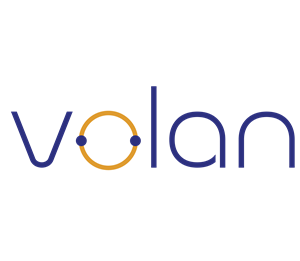Workforce Optimization: Strategies and Benefits to Stay Ahead [2022]
Workplace Optimization: What is it?
Workforce optimization is center stage in the conversation about how organizations can make better decisions regarding their resources and employees. In a time of unprecedented change, organizations are tasked with fundamentally rethinking how they work. From medicine to manufacturing, employee productivity remains more essential than ever. In this sea of change, industry-leading companies are finding opportunities for innovation and efficiency—and workforce optimization is a vital component of these processes.
What is workforce optimization? We define workforce optimization (WFO) as a set of strategies and practices that aim to improve employee and organizational efficiency. This strategy involves automating processes in warehouses and manufacturing facilities. This is done through the use of technologies that analyze operational efficiency and take key insights to develop better methods for production and management.
When organizations take the time to gain deeper insights into their daily operations they open a golden window of opportunity for cost and time-saving protocols, employee retention, and ultimately better ROIs. By recognizing and addressing weaknesses, such as productivity gaps, wasteful practices, and other inefficiencies, organizations can take the leap forward into Workforce optimization, create accountability with employee attendance and staffing needs, increase employee productivity, and improve customer experience by keeping up with customer demands.
While some of these manufacturing sites have begun to implement technology to optimize productivity, it is clear that many still lag in embracing new innovative solutions.
Ultimately, workforce optimization metrics and technologies are key to cutting operational costs while still meeting customer expectations and supply chain demands.
Benefits for the Employees
Workforce optimization benefits employees as well. Companies are still feeling the stretching effects of a global pandemic. There has never been a better time for a greater focus on essential workers’ physical and emotional wellbeing. Wellbeing impacts KPIs on multiple fronts—employee “burnout,” causes major problems for companies, and high turnover rates stretch resources and budgets thin. Now more than ever employees show strong preferences for companies with wellness programs and transparent systems of organizational metrics. Workforce optimization produces streamlined and efficient work under the context of employee success and organizational growth.
The upfront costs of WFO are far outweighed by better production, efficiency, and employee longevity.
Workforce optimization means pursuing the “sweet spot” where workers at all operational levels perform at their best and companies are able to gain better business outcomes.
So how do organizations achieve this “sweet spot?” They must first outline the critical measures of success—or key performance indicators (KPIs)—at all operational levels, from executive-level decision making to product development and manufacturing. If you want to be competitive in today’s day and age it’s imperative for organizations to use workforce optimization to streamline operations for all roles.
In all industries, organizations face the challenge of improving efficiency and productivity across the board. Companies must meet customer demand, improve customer engagement, advance production processes, track employee attendance and manage productivity. Fortunately, next-level technologies are closing the gap for decision-makers everywhere. Having the right data, tracking, and insights makes finding the best avenues for growth and productivity that much easier.
The Benefits of Workforce Optimization
WFO integrates business performance with individual performance. If business performance is defined by greater profitability, the individual is the pathway to achieving better sales. Manufacturing is one industry that is beginning to fully integrate workforce optimization into its business operations. For example, the productivity of an individual worker is measured through production numbers, product defects, and scheduling nuances such as overtime hours.
An example of another industry that has benefited greatly from workforce optimization is customer service contact centers. Contact center productivity improved vastly when agent performance started to be tracked. When customer calls were recorded, and speech analytics assessed, customer interactions improved and call centers saw a rise in productivity, employees’ work ethic improved, and quality management became easier. Of course, when a company implements workforce optimization, development doesn’t happen overnight, but when managers can stay focused on the important things, a business ultimately runs more smoothly.
The efficacy of a workforce or agent can be measured through customer satisfaction, capacity utilization, and output. WFO software establishes the means to translate these measurements into a matrix of performance and this translates to better business performance.
Ultimately, workforce optimization is related to these critical outcomes for any business:
- Lower operational costs: WFO highlights problematic areas so that companies can clearly see where they need to develop better organization, workflows, and strategies. It allows an organization to know where they’re working best and where they have room for improvement. Gap analyses can benchmark where operations should be performing, meaning that organizations will have the ability to know when they’re running successfully and know when specific organizational verticals lag.
- Employee performance and employee resilience: Measuring and analyzing individual performance data is crucial to company success. This information can run the gamut, including log-in and log-out times, productivity over the course of workdays and workweeks, and the idiosyncrasies behind delivering products and services. Employee resilience, however, is a concept that may go overlooked among many business leaders.Employee resilience entails the resilience, wellbeing, and long-term productivity of individual workers. While overtime may sometimes help the employee accrue additional pay and the employer meet production targets, but WFO analytics demonstrates how these goals often lead to worker burnout. Companies lose hundreds—if not thousands of dollars—in rehiring individual positions. That means retention is front and center for many employers, especially among industries such as retail and hospitality that withstood a harder economic hit during the pandemic. Therefore, workforce optimization metrics must gauge both the day-to-day productivity of employees and how those day-to-day numbers may vary over time.
- Customer satisfaction: from faster turnaround times for customer service requests to quality product deliverables—WFO ensures measures of success that drive significant impacts for the customer. One great way to know the successful WFO integrations is the net promoter score (NPS). WFO software and business analytics can track how increased efficiencies and productivity correlate with customers’ likelihood to recommend a company or product. Furthermore, online sentiments can also be tracked through review websites or social media. Sentiment analysis gauges the positive or negative sentiments related to an individual comment. Once products are off the assembly line, companies can gauge customer satisfaction by interactions online.
- Expanded customer base: Many employers talk about “customer concentration risk,” or the problem of putting all your eggs in one basket. WFO helps measure how organizational productivity and efficiencies relate to one happy customer and the relationship with a diverse customer base. Expanding the customer base is key to any organization’s growth, and the right WFO metrics create the window into understanding how to make that growth happen.
- Focusing on the right technologies: WFO can uncover where investments make the most sense—and that includes where to invest in the technologies to carry an organization forward.Whether it’s inefficiencies on the manufacturing line or delayed responses to customer service requests, technology interventions help streamline business across all industries. Workforce optimization allows better decision-making through the provision of essential data and new tools to increase productivity.
Workforce Optimization Software
Workforce optimization (WFO) software provides the technology to track, analyze, and improve workplace productivity. Efficiency and productivity cannot be tracked unless an executive or manager knows where to look.
First, you must define what you want to measure and create metrics for the elements you desire to focus on. Perhaps this will come from inefficiencies you already see within your company, or maybe you don’t even know where to begin. WFO software solves this issue by collecting the necessary data so that you and your employees can work smarter and increase productivity in all areas.
So how do you know if WFO software is the right move for your organization? Let’s look at a few essential elements of WFO software to set your sights on what to look for.
WFO software must first be easy to use or have a user-friendly interface. That means the interface must be intuitive and provide easy access to the metrics you need to track.
While some websites rank or “score” these software programs, a more beneficial exercise highlights key software features and calibrates how those features may complement business opportunities. Here are a few popular features that should align with your key business outcomes:
- Report creation and management: Report-outs must be accessible and potentially integrated across all business verticals. Having visibility into data that’s more important to your business allows for greater insights, accountability, and ensures different departments can stay on the same page across the board. The historical record is also essential, especially when it comes to an annual review and big decision-making processes.
- Budgeting & Forecasting: As businesses develop, they become more complex. That means budgeting becomes more complex too. Utilizing tools to take the guesswork out of forecasting is key to increasing profitability.
- Performance Management Interfaces: Performance management requires intuitive analytical tools to glean insights on the relationship between individual performance and business KPIs.
- Time & Attendance: Attendance software is necessary for businesses to have a central place to schedule, forecast, and track employee hours and overtime. Some of the latest technologies, like Volan’s even allows for automatic rostering and attendance.
- Employee Lifecycle and Skills Tracking: If employers want to prioritize helping employees advance in their skill sets and careers data tracking will play a crucial role in this process. Upskilling is often more cost-effective than acquiring new talent. Diagnosing trends for how businesses develop talent is a critical business analytic. Having data on best-performing employees takes the guesswork out of who to promote and who needs better training or different placement within an organization.
- Employee/Business Integrations: Analyzing employee skill and business performance overlaps is important. This analysis typology reveals where to upskill workers, acquire new talent, or reallocate resources.
- Quality Management: Gauge how individual performance across critical metrics aligns with the quality of products and services that your customers have come to expect.
Workforce optimization is a broad concept—but it can’t be overlooked in a market climate that’s becoming more competitive by the day. At its core, WFO is a set of operational strategies and practices that improve both individual and organizational-level efficiencies and productivity. Every organization has its unique set of problems to solve and that’s why having the key data to assess will allow companies to build custom solutions and strategies. Instead of relying on industry standards or outdated methodologies, managers can begin to optimize productivity, deal with supply chain issues, improve customer experience, employee retention, and allocate resources in a timely and cost-effective way.
By defining the employee and organizational metrics that matter most, businesses can tailor strategies to key outcomes. The benefits of a sound workforce optimization strategy are clear.
If you are interested in seeing our solution in action, please contact us.



